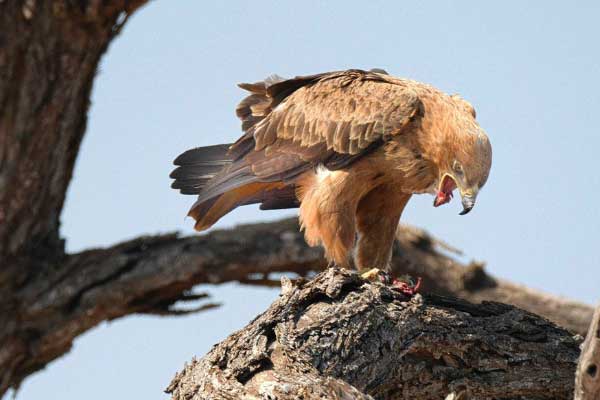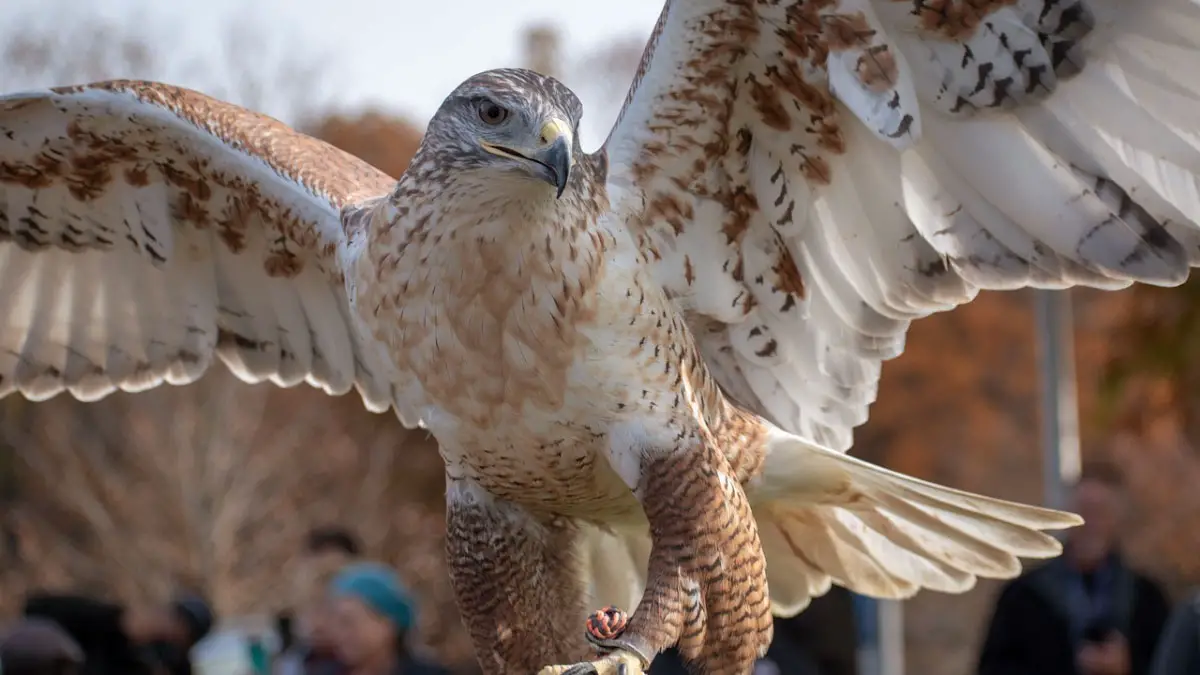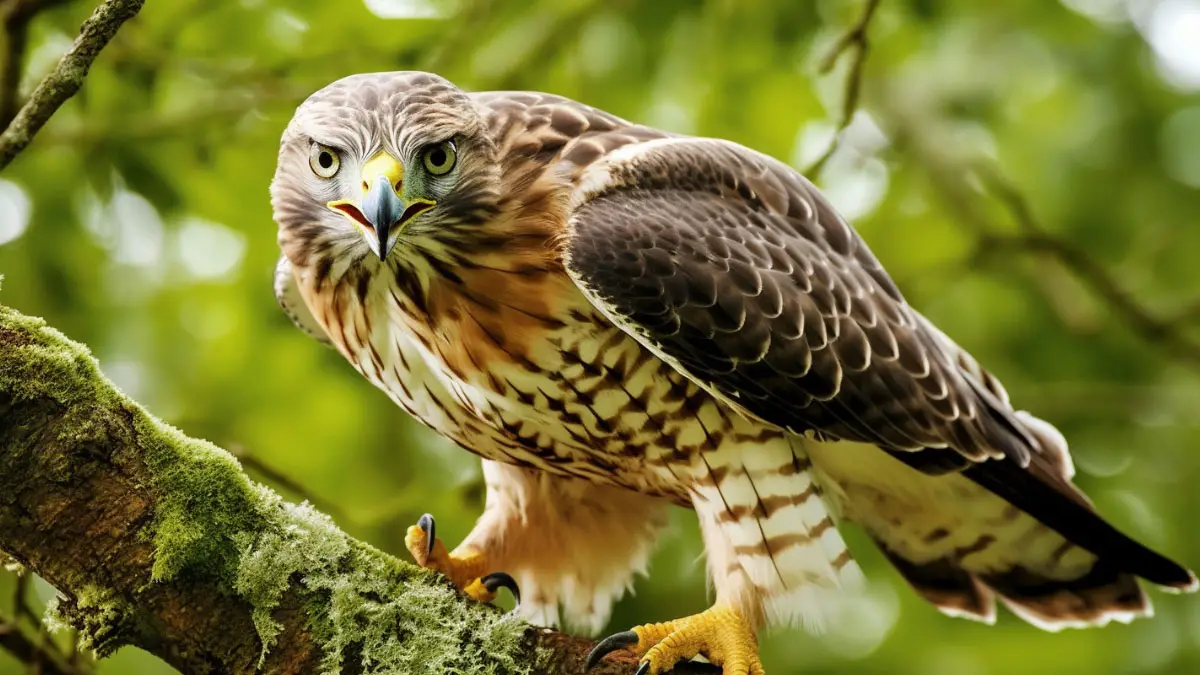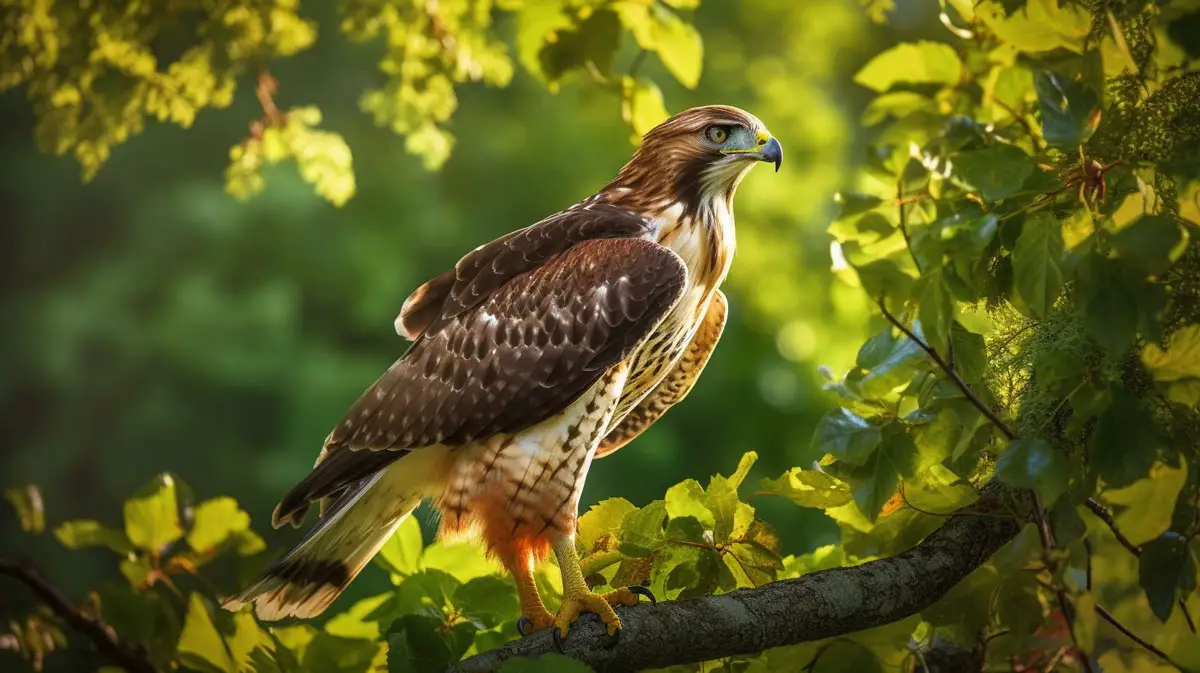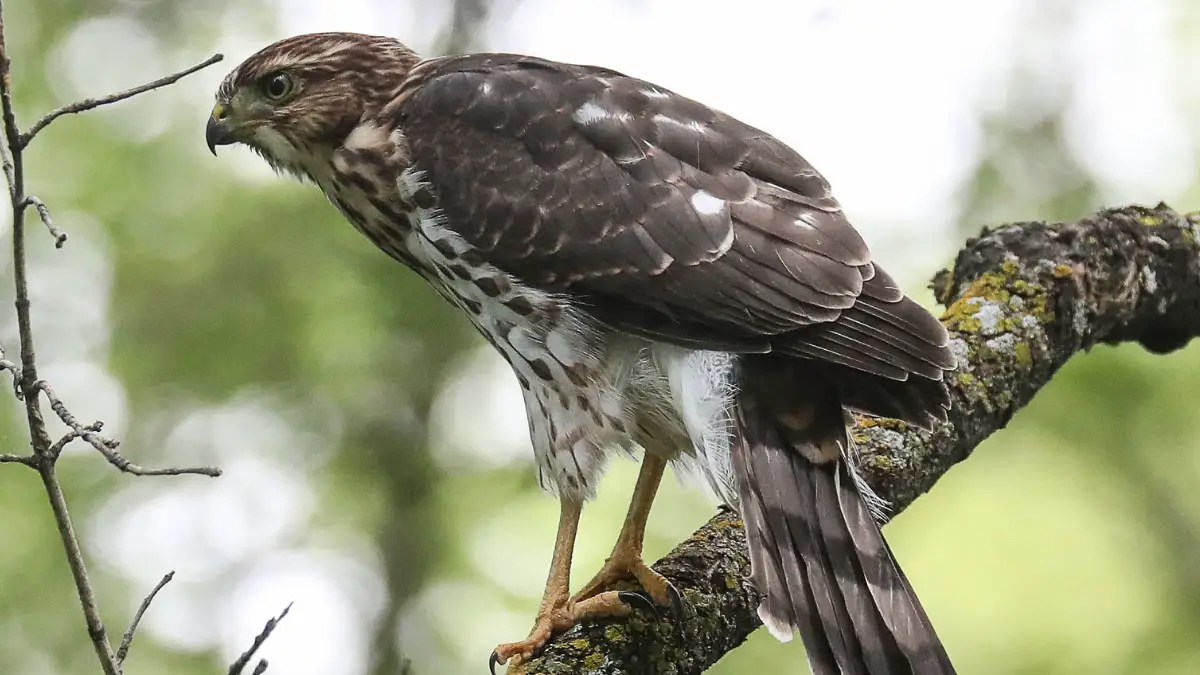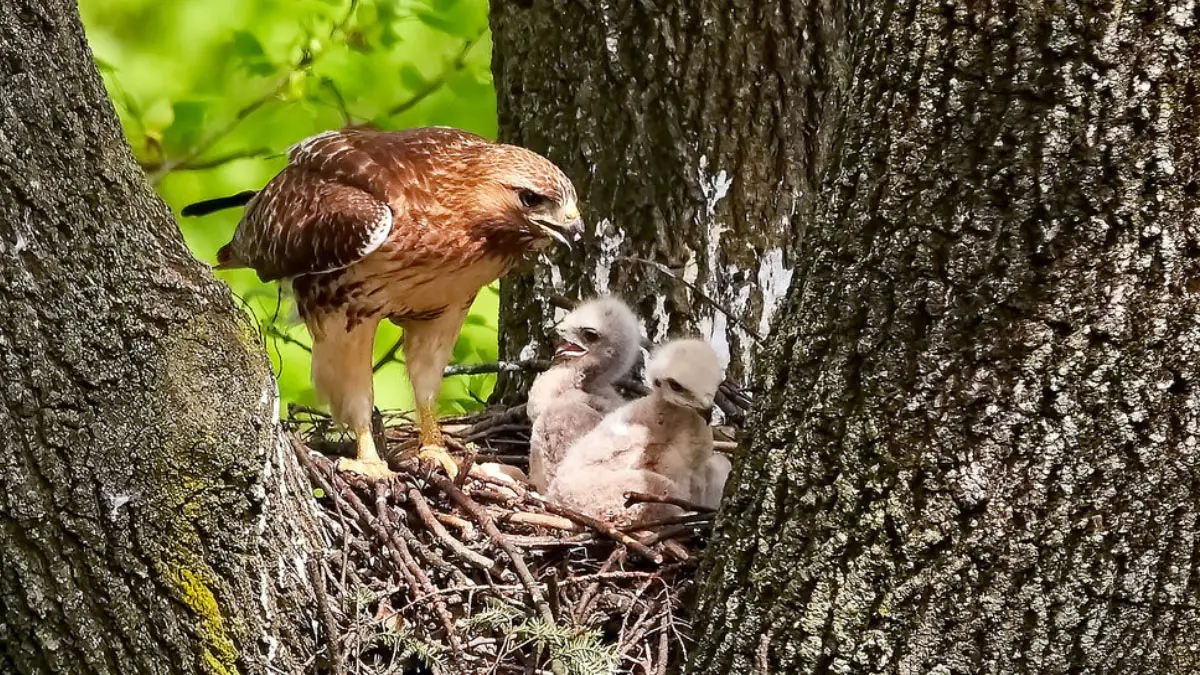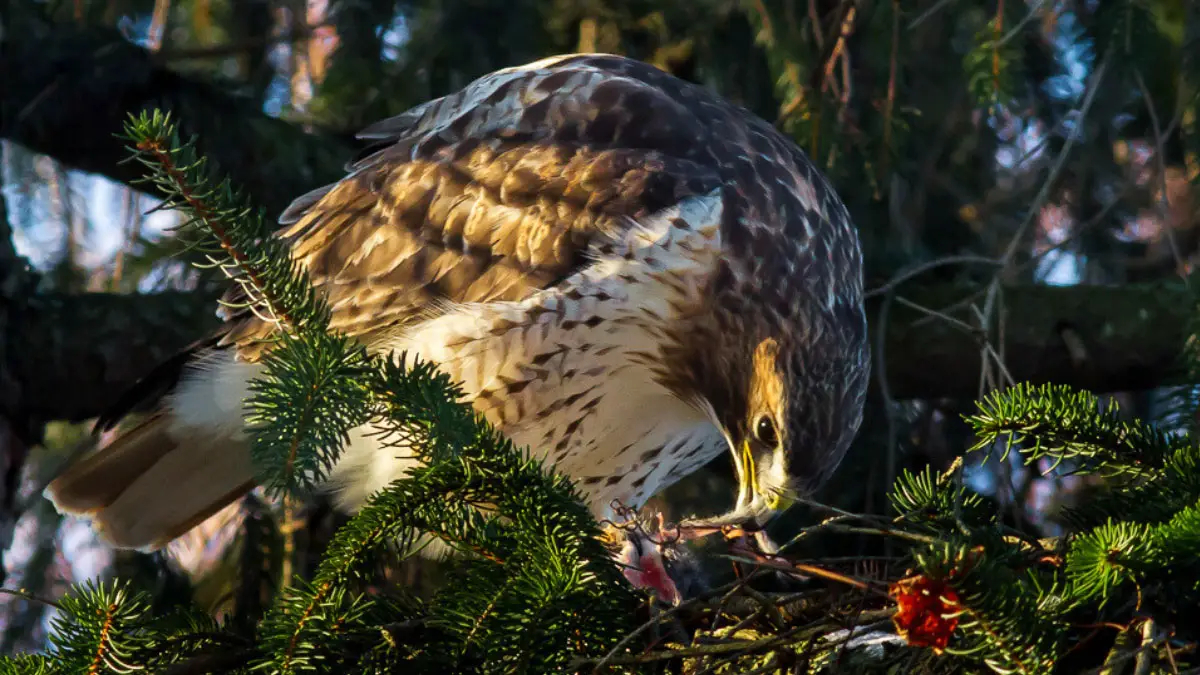Hawks have a broad wingspan, keen eyesight, and razor-sharp talons. These unique features enable the hawks to feed on many different kinds of food.
So, do hawks eat coyotes? Mature red-tailed hawks are strong enough to kill small-sized coyotes and fly off with the kill. Young hawks find it challenging to kill the coyotes and lift them off the ground. Most hawks scavenge on dead coyotes on the ground. However, this poses a great risk as the hawk is exposed to predators.
Fascinating how nature balances between prey and the predators. This article shall discuss how the hawk kills its prey and which hawk eats what type of food.
Do Hawks Eat Coyotes?
First, what are coyotes? Coyotes are species from the canine family with their origin from North America. This species is smaller than the wolf and hence predated by the mature hawks.
With the increasing bad population, demand for food for the high population rises, especially for the carnivores. Their favorite food group is the small mammals such as the rats and mice for the hawks. These small mammals are in plenty hence serving as the primary source of food for hawks.
Depending on the region that the hawks inhabit, they feed on different types of prey. The red-tailed hawk is believed to be the strongest and largest bird.
With its strong, sharp talons, the hawk can kill and lift the young coyotes. According to a research study, red-tailed mature hawks can lift to 5pounds (app. 2 ½ kilograms) and fly with it for long distances.
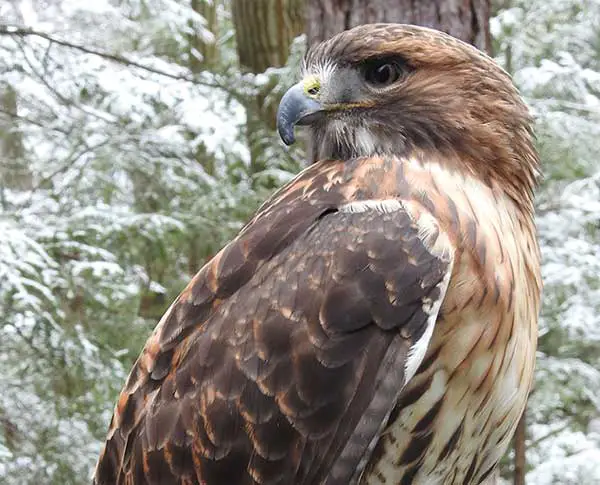
If the coyote is heavy and thus can’t be lifted off the ground, the hawk will kill and drag the carcass to a hidden area to feed. However, hawks avoid feeding while on the ground, exposing them to other natural predators.
What Is A Hawk’s Favorite Food?
Different hawk bird species will feed on a wide variety of food. The region where they live will also dictate what type of food they eat.
We have the following categories based on the different hawk species with all these factors in place.

Cooper hawks
These types of birds prefer feeding on small birds. Occasionally cooper’s hawks prey on poultry birds, especially the young chicks.
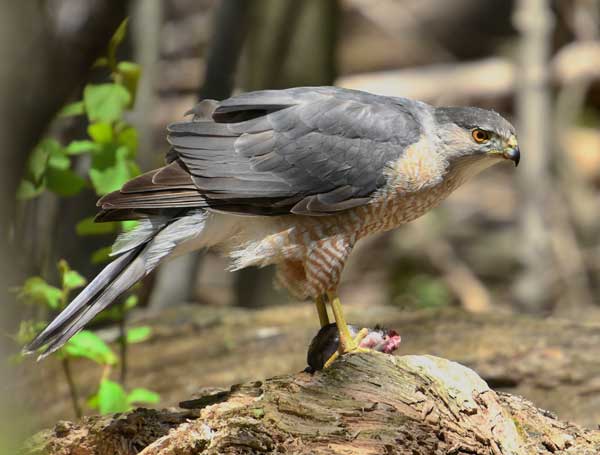
Red-tailed hawks
Red-tailed hawks are North America’s strongest and most common hawk in the bird population. Its strong talons and curved beaks feed on mammals and other small birds. The curved beak is efficient in tearing meat from the mammals and bird species.
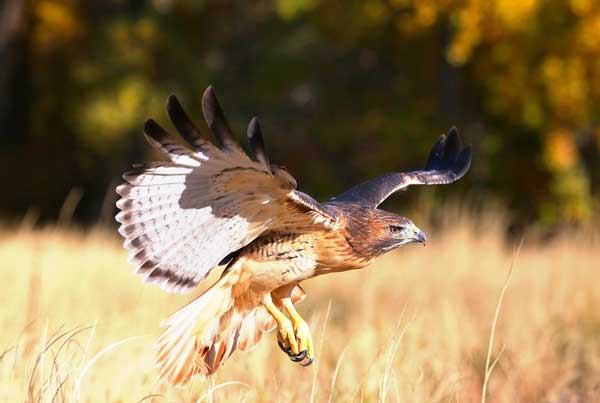
Northern goshawks
The northern goshawks will predate largely on medium-sized mammals such as rabbits and moles as their common food sources. They can spot squirrels in their holes and drop at high speed to pick the squirrels.
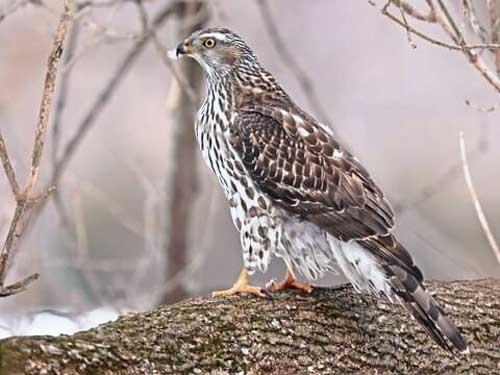
Broad-winged hawks
You may expect these hawks to feed on large species with broad wings. Surprisingly, the broad-winged hawk feeds on insects as their primary source of food from garbage cans. They occasionally feed small reptiles such as lizards, bird eggs, and frogs to supplement their diet.
Despite the classification, most hawks are known to be opportunistic carnivores. This trait is common when food is scarce. They feed on almost every type of animal carrion they come across.
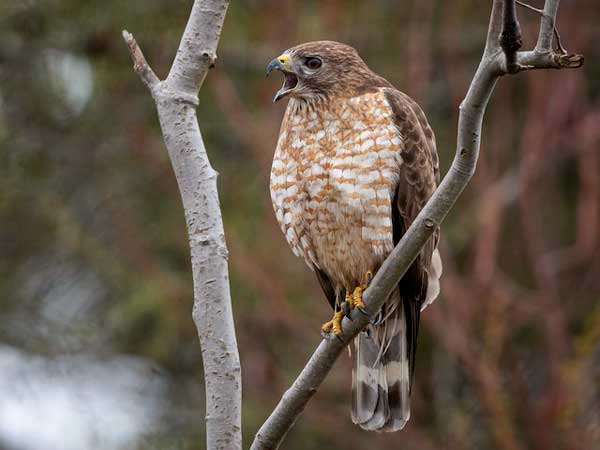
How Do Hawks Kill?
One of the amazing things about the hawks is how they kill. Being one of the biggest predators, they rarely feed on dead animals but rather hunt and kill their prey like many other carnivorous animals.
While hunting for its prey, the hawk will fly high enough and then target the prey with its keen eyesight. After stalking the prey, they swoop down at a very high speed and knock out the prey to kill.
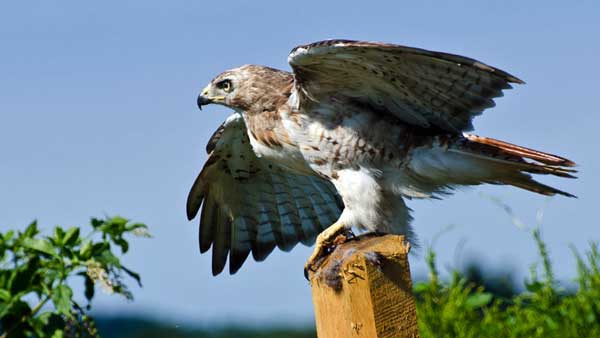
Use of their talons
Hawks mainly use their paws to kill. The paws are well adapted to instant killing. They are strong and razor-sharp, enabling the hawks to strike and kill instantly. An added advantage is that they use the talons to grab and lift their prey off the ground.
While lifting the prey, the hawk crashes the prey using the talons. Their high speed and strong eyesight can strike at the weakest points, such as the neck and the backbone, paralyzing the prey.
Striking with the beak
Hawks have a strong curved beak. The beak is short enough to concentrate power while striking. The hawk knocks down the prey at its vulnerable points with a high-flying speed, rendering it powerless.
Such a kick will either kill or cause the prey to losing its control. With the help of the paws, it grabs the prey to the high ground and tears the prey with the beak.
Choking the prey
With their strong feet, the hawk chocks the prey by gripping around the neck with the talons until the prey is dead. The hawks sometimes fracture the bones with their strong feet, causing internal organ damage.
Once the prey is dead, they pull out the sharp beak to tear through the fresh.
Using their strong, broad wings
Hawks rarely use this technique as it frightens the target before striking it. However, hawks strike them down using their broad wingspan for the docile prey. The wings are strong enough to strike dead prey.
The hawk then flies off with the prey holding it by its claws.
Suffocating the prey at high altitudes
Some prey, such as the reptiles, may be a challenge to kill. Hawks are known to claw such prey and fly high above the ground to levels with low oxygen suffocating the prey.
This is common with the snake that becomes numb at high altitudes; hence, it is easier for the hawk to kill it.
Which Hawk Eats Coyotes?
Hawks are opportunistic carnivores. They will feed on what they come across as their food. The large and bolder hawks will even feed on smaller hawks.
However, coyotes are difficult to hunt due to their strong animal instinct and huge body size. Few hawk species can hunt them effectively. The red-tailed and the sharp-shinned hawks are known to be strong enough to make such hunts.
| Hawk species | Coyote prey? | Details |
|---|---|---|
| Red-tailed Hawk | Rarely | While Red-tailed Hawks are known to prey on a wide range of animals, including mammals, they typically hunt smaller prey such as rodents and rabbits. Coyotes are generally too large for a Red-tailed Hawk to take down, but there are rare reports of them attacking young or injured coyotes. |
| Ferruginous Hawk | Yes | Ferruginous Hawks are one of the largest hawk species in North America and are known to prey on a variety of mammals, including rabbits, ground squirrels, and prairie dogs. They have been observed attacking and killing coyotes, especially young or injured individuals. |
| Golden Eagle | Yes | Golden Eagles are powerful birds of prey and are known to hunt a variety of mammals, including rabbits, hares, and ground squirrels. They have also been observed attacking and killing coyotes, particularly juveniles or sick individuals. |
| Bald Eagle | Rarely | Bald Eagles typically prey on fish and waterfowl, but they have also been known to take small mammals such as rabbits, squirrels, and rodents. While they are capable of attacking and killing coyotes, it is a rare occurrence. |
| Cooper’s Hawk | No | Cooper’s Hawks are small to medium-sized birds of prey and typically prey on smaller birds such as doves, pigeons, and songbirds. They are not known to attack or kill coyotes. |
| Sharp-shinned Hawk | No | Like the Cooper’s Hawk, the Sharp-shinned Hawk is a small to medium-sized bird of prey that primarily preys on small birds. They are not known to attack or kill coyotes. |
On the other hand, a dead coyote is a food for every hawk. Coyotes are attacked by natural predators, leaving them injured or dead, making them an easy hunt for the hawks. However, these animal carcasses expose the hawks to danger.
The urban coyotes found in North and Central American cities are more exposed to predators and hence easily hunted by the hawks.
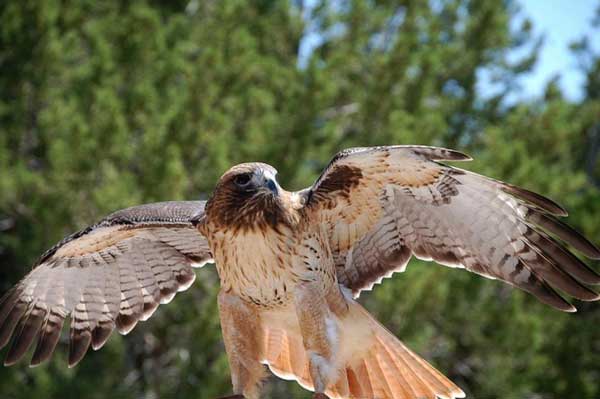
Hawk vs Coyote
Hawks and coyotes are both predators, but they have different hunting strategies and prey preferences. While hawks are aerial hunters that typically hunt smaller prey such as rodents and birds, coyotes are terrestrial hunters. They can take larger prey such as deer but primarily prey on small mammals such as rabbits and rodents.
In general, hawks are not known to attack adult coyotes because they are too large and powerful for a hawk to take down. However, there have been rare reports of hawks attacking and killing young or injured coyotes. The Ferruginous Hawk and Golden Eagle are two hawk species that are known to prey on coyotes, particularly young or injured individuals.
On the other hand, coyotes are known to prey on smaller bird species, but they are not a primary prey item for most coyotes. Coyotes are more likely to prey on rodents, rabbits, and other small mammals.
Overall, while there have been rare instances of hawks preying on coyotes, it is not a common occurrence, and coyotes are not a primary prey item for most hawk species.
Do Coyotes Eat Hawks?
Coyotes are opportunistic predators that have a varied diet, including small mammals, birds, insects, and even fruit. While red-tailed hawks are not a primary prey item for coyotes, there have been rare reports of coyotes preying on red-tailed hawks.
Red-tailed hawks are large birds of prey that typically hunt small mammals and birds. They are not an easy target for coyotes, and adult hawks are usually able to defend themselves from coyote attacks. However, young or injured red-tailed hawks may be more vulnerable to predation by coyotes.
In general, coyotes are more likely to prey on smaller bird species such as songbirds and ground-nesting birds. However, if a coyote encounters a red-tailed hawk that is weakened or injured, it may attempt to prey on the bird.
Overall, while it is possible for coyotes to prey on red-tailed hawks, it is not a common occurrence and is more likely to happen to young or injured birds.
FAQs
Here are some of the questions about the hawks and their hunting life.
No. Hawks are birds of prey. They kill their prey before feeding on them. They will never eat live catch. They hunt, kill, and then tear the fresh with their adaptive features.
Hawks feed on the whole prey. They feed on the flesh, bones, and even the feathers. Using the sharp, strong beak, they tear and break every piece for swallowing.
Their digestive system is well adapted to digest whatever they feed on.
Hawks hunt in unison. Hunting in groups helps them spot their prey faster. Hawks also risk being attacked by natural enemies such as the human populations; hence group hunting improves their security.
If one hawk spots prey, it signals the others by sound to regroup.
Final Verdict
Adult hawks are strong enough to hunt and kill young coyotes and other small mammals. Hawks remain an interesting bird to watch while hunting their prey in the natural environment.
These birds are adapted to hunt and kill their prey instantly. Due to many threats to hawks, they have learned the art of swooping down to hunt their already identified prey and fly back to their safe habitat.
Do you want to know if hawks eat fish or chickens? Read our articles about it to learn more.
